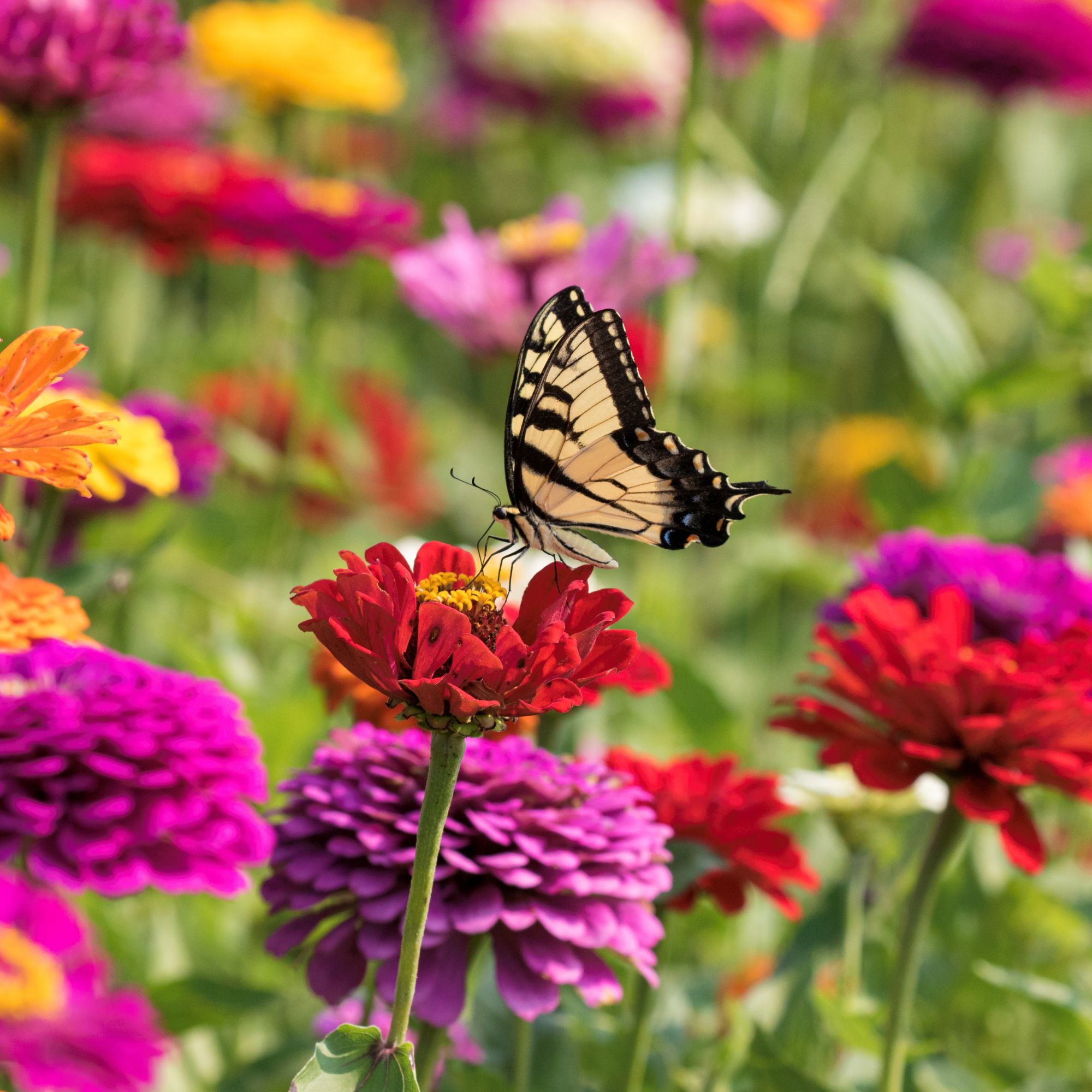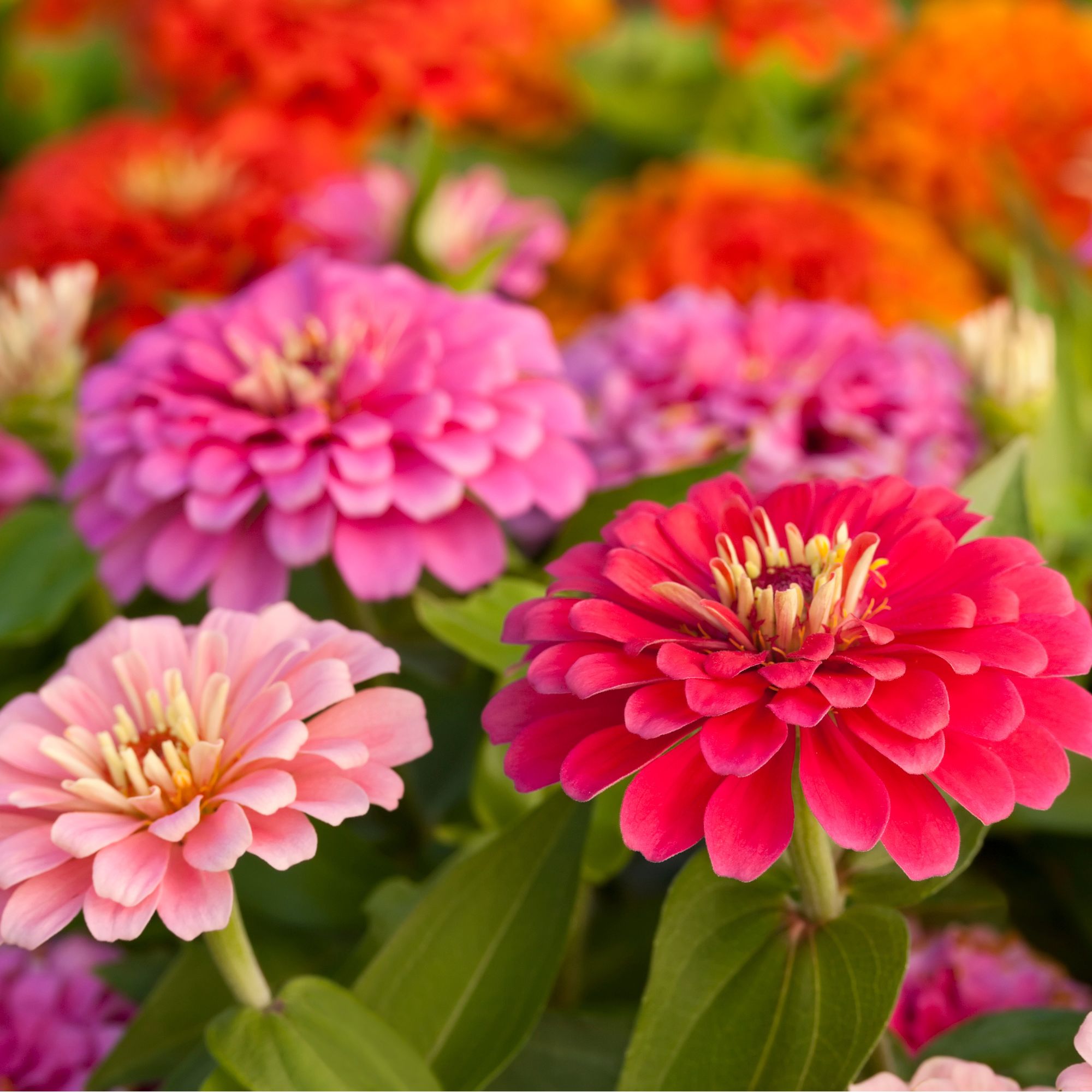
If your zinnias are starting to fade, you may be wondering: Should you deadhead zinnia? And while we’d love to give you a black-and-white answer, the truth is that you have a choice to make when it comes to these stunning blooms.
Yes, as there are so many plants you should never deadhead, it can be hard to know whether you should deadhead zinnia or not. And when you’re dealing with beautiful flowers that are ideal for growing in garden borders or as part of a container garden, you don’t want to make the wrong decision.
That’s why we’ve spoken to garden experts to understand your options when your zinnias reach the end of their flowering cycle, which may be anywhere between early autumn and the first frosts. So, should you deadhead zinnia? Or should you leave them alone?

Why you should deadhead zinnia
‘Zinnias are colourful annuals that bees love,’ explains Morris Hankinson, Managing Director of Hopes Grove Nurseries. ‘Easy to grow, as long as they are well protected early on in the season since slugs love them as well, zinnias can brighten up even the toughest spot to grow in the garden.’
But when they start to fade, your first option is to deadhead your zinnia plants, just as you would deadhead roses or deadhead hydrangeas. In fact, zinnia is one of the many plants where deadheading can promote a second bloom.
Morris says, ‘To keep them flowering for as long as possible all the way through from early summer into early autumn, they will need to be deadheaded,’ and you should do this as soon as you spot that the flowers have started to fade and wilt, and before they turn fully brown and crispy.
By removing the spent flowers at this time, you can ensure that the plant doesn’t waste precious energy that could otherwise be used to promote a second flush of flowers.
If left on too long, your zinnia will also go to seed, wasting even more energy when you could get even more out of the plant. Deadheading zinnias also improves the overall health and well-being of the whole plant, making it look neater and tidier throughout its blooming period.
Just make sure that you’re not making any deadheading mistakes when you do this, and Morris advises to ‘Simply snip the flower stem above a set of leaves or buds so the plant bushes out more and continues to flower.’

Why you shouldn’t deadhead zinnia
As zinnias are half-hardy annuals, deadheading them won’t allow them to grow back bigger and better next year - because they won’t grow back next year anyway.
Because of this, choosing not to deadhead your zinnia plants can actually work in your favour. By allowing them to go to seed, you can then collect these seeds to grow more for free next year. You’ll just need to safely store them in an airtight container and understand how long seeds can be stored.
Even if you don’t actively collect the seeds, though, leaving the spent flowerheads on the stems and allowing them to go to seed naturally could also spark self-seeding. So, you may get more zinnias next year without even trying.
This is echoed by Tony Williams, Estates Manager at Mount Ephraim Garden, who says, ‘Choosing not to deadhead Zinnias allows the plants to focus on seed production, which can result in fewer new blooms and a shorter flowering period.’
He adds, ‘However, it also encourages self-seeding, leading to potential new plants the following season and gives the garden a more natural, wild appearance. This approach is best if you prefer a self-sustaining garden or wish to collect seeds for future planting.’
Just be warned that some zinnia varieties do struggle to self-seed in the UK due to the cold temperatures, so they might not survive the winter.
What you'll need
No matter whether you're deadheading your zinnia or not, it's always worth having a pair of gardening gloves to hand to prevent the spread of disease.
Before snipping your zinnias, you should always clean your pruners or secateurs. If not, you may expose your plants to disease.
These pruners are perfect for deadheading your zinnia and will cut right through any stems. Just remember to cut above a set of leaves or buds.
FAQs
Do zinnias come back every year in pots?
No, zinnias won’t come back every year - even if you grow them in pots. Zinnias are annuals, meaning they will die after one blooming period.
If you want to grow them year after year, you’ll either need to re-sow your zinnia seeds or buy plug plants that are ready to be planted. Alternatively, you could let your zinnias go to seed before collecting the seeds and planting them again for free.
In rare cases, your zinnia may also self-seed, but this is less common in the UK, as the temperature is too cold for the seeds to overwinter successfully. Because of this, it’s better to collect and store the seeds yourself.
Do zinnias like to be crowded?
Zinnias will still grow if they’re crowded, but they don’t enjoy the lack of space. If zinnias are grown too close together, you’ll find that the stems are short and stumpy, and the flowers aren’t as big or vibrant as you’d expect.
Alongside this, crowding zinnias and reducing airflow are surefire ways to spread diseases, which will stunt the growth of your plants. In extreme cases, they may even kill the plant.
So, when planting zinnias, always make sure that you give them a bit of space. In an ideal world, they should have at least 30cm between each plant - but we know that can be difficult when you’re growing zinnias in pots.
So, will you be deadheading your zinnias? Or will you leave them to go to seed?







